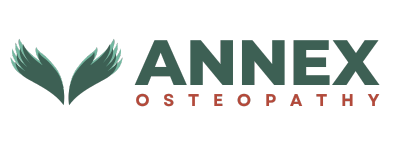Well…, it just does not work.
I always felt that being gentle in my approach brings far better results with significantly less soreness and discomfort after the treatment. It was also my experience doing yoga or stretching at the gym, that I don’t really make my muscles, tendons or ligaments any longer. It always felt that the effects of stretching are the ability of my body to get more comfortable, balanced and stronger in holding the stretch or a yoga pose.
I found that working aggressively, applying strong force to my patient’s bodies does not bring results I am aiming for. But instead of relieving tensions it often causes soreness and strain.
Instead, when I hold my patient’s tissues under tension during the treatment, it feels that they respond very well to a gentle, very much like a whisper, kind of pressure. I pull very subtly to match the strength of the muscle, a ligament of a layer of connective tissue.
There is a number of scientific studies that confirm the idea that being aggressive or overly assertive with stretches simply does not work. I am a science geek, so let me bring it here. One study I found is about the infamous IT band.
Sooner or later, most long distance runners encounter some discomfort around their outer knee, and their manual therapist might assess it as IT band syndrome. Treatment usually involves fairly aggressive release techniques where the therapist “sticks” their elbow or fist into the outside thigh and runs it up, down and across in hope to release “tight” IT band. There is always some homework involving awkward stretches and excruciatingly painful foam rolling. Unfortunately, there is absolutely no evidence to support that these procedures are helpful. There is very little chance that the IT band would get any longer or looser. You can take a look at the study that was done to see whether IT band can actually be stretched. https://www.linkedin.com/pulse/ilio-tibial-band-please-do-use-foam-roller-andrew-franklyn-miller
Similar conclusions were reached by other researches. It was shown that in order to stretch and bend IT band to about %1 a therapist would have to apply force of over 460 kg. Researchers concluded that “such forces are far beyond the physiologic range of manual therapy.” The same is true about plantar fascia, also a common bane of many runners or high heel walkers.
Here is the citation for this study: Chaudhry, H., Schleip, R., Ji, Z., Bukiet, B., Maney, M. and Findley, T. (2008). Three-Dimensional Mathematical Model for Deformation of Human Fasciae in Manual Therapy. The Journal of the American Osteopathic Association, 108(8), p.379.
So what gives? What is actually happening? Why some people feel that having “elbow in their buttocks” works for them? I seems that we all perceive pain differently, and for some, strong sensations indicate that effort is being made, therefore it must be good and somehow helps them to recover. And this is perfectly fine, as long as positive outcomes are there for the patient.
However, there is growing body of scientific evidence that suggests that changes do not come from force, but from gentle intelligent touch that affects nervous system. This brings about relaxation, changes how the body is felt and oriented in space. Gentle touch to the appropriate areas of the body will block painful sensations and thus allow muscles and connective tissues to work more efficiently. This efficiency, in time, distressed the painful muscles, and allows them to heal.
